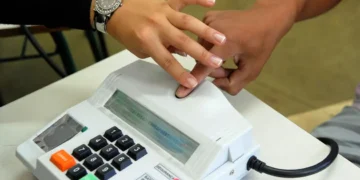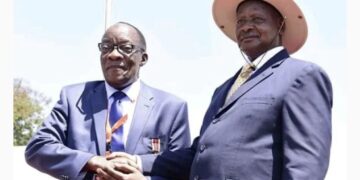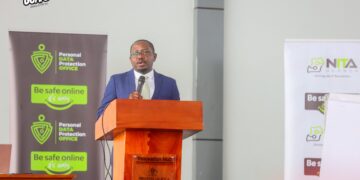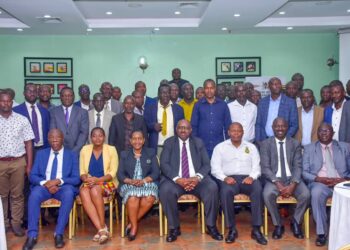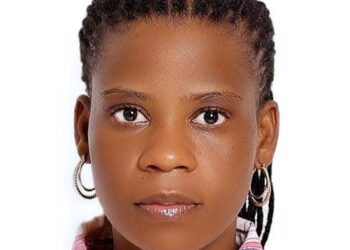By Tracy Acen Oiko
The number of Ugandans accessing electricity outpaced the country’s population growth rate between 2010 and 2020, according to IEA, IRENA, UNSD, World Bank WHO Tracking SDG7: The Energy Progress Report 2022.
Of the top 20 access deficit countries in Sub–Saharan Africa, Kenya and Uganda scored the greatest gains…increasing their annual access by 5.2 and 3 percentage points respectively, states the report.
To arrive at the conclusion, the five custodian agencies’ team subtracted the access rate of year one from that of year two then divided the result by year two’s minus year one’s.
Nigeria, the Democratic Republic of Congo and Ethiopia had the largest unserved populations.
The report adds that measuring access to electricity enables governments to appreciate the status of access and to efficiently implement the 2030 Agenda.
Agenda 2030 encompasses Sustainable Development Goal 7, which seeks to increase access to affordable, reliable, sustainable and modern energy for all by 2030.
Increasing access to clean energy is in line with Uganda’s third National Development Plan.
To make sure more Ugandans get affordable clean energy, the government now funds the construction of renewable power generation stations like Karuma and Isimba whose tariffs are not more than five American cents (Sh182) per unit.
It introduced declining block rates for the large and the extra–large industrial users, it implements a lifeline tariff band for household consumption, introduced a cooking tariff to nudge many households to use electricity to cook and has seen to the refinancing of Bujagali Energy Limited’s debts.
Utilities Umeme, Uganda’s main power distributor, the Uganda Electricity Transmission Company Limited and the Uganda Electricity Distribution Company Ltd are putting up more substations to reduce distances between the end users and the grid and are investing in thicker cables to minimise the loss of energy in the form of heat and transportation over long distances.
They are also engaging communities on the need to fight the stealing of electricity and vandalism of electricity infrastructure.
These initiatives go a long way in ensuring more units of power being available over which the electricity sector’s costs can be spread.
Holding the sector’s costs constant, the more units available, the lower the per unit prices (tariffs).
To increase access, the government is implementing the Electricity Connections Policy (ECP), through which electricity distributors should connect 300,000 households to the power grid each year through to 2027.
Between November 2018, when it launched ECP, and June last year (2021), the distributors made over 300,000 extra connections, with UMEME making close to 90 per cent of the connections.
The March 2020 outbreak of COVID-19, a respiratory infection, however, slowed Uganda.
The government redirected some of funds that would have gone to free connections to checking the spread of COVID–19.
It later implored applicants who could afford the cost reflective connection charges to embrace customer–funded connections.
The government has since engaged international development partners such as the African Development Bank (AfDB) and the World Bank over ECP.
In August 2021, AfDB provided Uganda with resources to make 87,500 connections.
And in March 2022, the World Bank committed US$568 million (Sh2 trillion) towards Uganda’s Electricity Access Scale-up Project (EASP), which it says is intended to increase the proportion of households, commercial enterprises, industrial parks, and public institutions accessing electricity.
Up to 900,000 households will be connected to the electricity grid under the EASP, which the government says will run until 2027.
Uganda’s average household size is five, thus 900,000 additional connections would mean more 4.5 million persons on top of the current 8.5 million accessing the national power grid by 2017.
But with just under eight years left to achieve SDG 7.1, the report states, governments and the international community face the challenge of drastically increasing the pace of progress in a context of uncertainty and transition towards net–zero energy systems.
It says the global electricity access rate needs to increase by 0.9 percentage points each year to achieve universal access by 2030 and warns that if the current global growth trend of 0.5 percentage points persists, it would derail the progress towards attaining the target.
Access to electricity unlocks many economic opportunities such as business, enable many pupils and students to study into the night, hospitals and patients to preserve medicines that would go to waste without power.
Additionally, power and improves many households’ quality of life by enabling them to power their consumer electronics such as smartphones, television sets and microwaves, among others.
SOURCE: UMEME
















